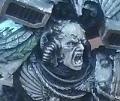| Author |
Message |
 |
|
|
 |
|
Advert
|
Forum adverts like this one are shown to any user who is not logged in. Join us by filling out a tiny 3 field form and you will get your own, free, dakka user account which gives a good range of benefits to you:
- No adverts like this in the forums anymore.
- Times and dates in your local timezone.
- Full tracking of what you have read so you can skip to your first unread post, easily see what has changed since you last logged in, and easily see what is new at a glance.
- Email notifications for threads you want to watch closely.
- Being a part of the oldest wargaming community on the net.
If you are already a member then feel free to login now. |
|
 |
![[Post New]](/s/i/i.gif) 2013/08/22 10:03:29
Subject: Power Armour painting question
|
 |

Speedy Swiftclaw Biker
Gold Coast, Queensland, Australia
|
Hey there everyone. I'm about 8 weeks into my return of the 40k world, originally I painted orks 10 years ago and they were fairly basic to paint, but I'm finding with my space wolves army, that if you view the model up close it appears lumpy. I am thinning my paint as I go, adding water to the brush as I paint. It's not completely obvious but I notice when googling space marine armies they look smooth and nearly even shiny. Any suggestions would be great. Should I matt varnish also?
|
|
|
 |
 |
![[Post New]](/s/i/i.gif) 2013/08/22 11:04:43
Subject: Power Armour painting question
|
 |

Drakhun
|
Well here we go, lets take this one at a time.
1. Thin you paints. Most people say to a "skim milk" consistency, which I find works well. Water works fine, Some folks use a thinning medium (I do).
Basically you want it nice and thin so that it does not get lumpy or leave stroke marks from your brush. If done right it will take multiple coats of paint to get the color down.
2. I think the shiny your seeing is from the reflection of the flash on the camera. However using a gloss varnish, and then a mat varnish is always a good idea to seal the models.
Hope that helps.
|
|
|
|
 |
 |
![[Post New]](/s/i/i.gif) 2013/08/22 16:45:32
Subject: Power Armour painting question
|
 |

Dakka Veteran
|
Dude, your space marines looks awesome!
|
An open mind is like a fortress with its gates unbarred and unguarded. |
|
|
 |
 |
![[Post New]](/s/i/i.gif) 2013/08/22 16:50:21
Subject: Power Armour painting question
|
 |

Legendary Master of the Chapter
|
Your stuff is fairly well done.
Some of those online spess mahrin armies are airbrushed so will generally be more smooth.
But i find that when painting, thin as above, but also paint in a very clean and dust free area helps. nothing ruines a paint job like a piece of hair or lint suddenly appearing on a model.
|
 Unit1126PLL wrote: Unit1126PLL wrote: Scott-S6 wrote: Scott-S6 wrote:And yet another thread is hijacked for Unit to ask for the same advice, receive the same answers and make the same excuses.
Oh my god I'm becoming martel.
Send help!
|
|
|
 |
 |
![[Post New]](/s/i/i.gif) 2013/08/22 17:08:03
Subject: Power Armour painting question
|
 |

Gargantuan Gargant
|
 fleetwolf wrote: fleetwolf wrote:I am thinning my paint as I go, adding water to the brush as I paint.
This makes it sound like you are thinning by dipping your brush into both paint and water, separately, then going going to the model. If so, it would explain any "lumpiness" in the finish, as you're essentially trying to mix your paint on the model. Instead, thin your paint on a palette (wet palettes are especially handy and quite cheap/easy to make, but even a piece of aluminum foil or a plastic container lid will work - anything flat/concave and nonabsorbent), getting the paint evenly and thoroughly mixed before you load your brush to work on the model.
A rough undercoat is another common culprit, although "graininess" is the usual result, as opposed to "lumpiness," which (at least to me) suggests fewer and larger textural irregularities. People worry about thinning their paints constantly, but comparatively few take a good look at their priming jobs to make sure they have a smooth canvas to work on. Thin paints won't change the underlying texture, overmuch, so make sure you keep things smooth at each step - plastic, primer, paint, and varnish.
Speaking of varnish, I would highly recommend a final matte coat. I prefer several layers of varnish, actually, just for guaranteed protection of my work, but even a single dusting will help. Aside from protecting the paintjob, varnish (of any luster) will help even out the reflectivity of your work, which can vary depending on what was used (different lines/colors of paints can be more or less matte, inks and washes tend to dry a bit glossier than paint, etc.).
|
The Dreadnote wrote:But the Emperor already has a shrine, in the form of your local Games Workshop. You honour him by sacrificing your money to the plastic effigies of his warriors. In time, your devotion will be rewarded with the gift of having even more effigies to worship.
|
|
|
 |
 |
![[Post New]](/s/i/i.gif) 2013/08/22 18:14:27
Subject: Power Armour painting question
|
 |

Speedy Swiftclaw Biker
Gold Coast, Queensland, Australia
|
Thanks guys! Yeah just quietly in the back of my mind I thought that my thinning method wasn't enough, I have fairly poor lighting source when I'm painting and it's not until I put my models in the display cabinet under a warm LED that I notice a few imperfections. I agree that these faultless models I'm seeing on the Internet must be airbrushed and potentially te flash. Varnishing my models makes me nervous because I have heard so many horror stories
|
|
|
 |
 |
![[Post New]](/s/i/i.gif) 2013/08/22 22:57:27
Subject: Power Armour painting question
|
 |

Gargantuan Gargant
|
Don't be nervous - most varnishing issues are due to user error, frequently as a result of rushing (not shaking the can enough, not letting its contents warm up in cold weather, not waiting for better ambient conditions, etc.). You can and will get good results the vast majority of the time simply by following the instructions/warnings printed on the can. If you're still worried, spray some scrap to test your method and the ambient conditions - no test models needed, as a piece of bare sprue will tell you as much about your varnish as a fully painted model.
Also, regarding the smoothness of paintjobs: While some of those models you're seeing likely have been airbrushed and airbrushing is generally gaining in popularity, of late, many of them will have been done completely by hand. With sufficiently thin paint, there is no appreciable texture imparted, no matter how many coats you apply, as each layer is thin enough to be self-leveling. Airbrushing is a faster way, perhaps, to build smooth layers and color transitions, but pretty much anything you can do with one can and has been done by hand.
Finally, upgrade your lighting! It doesn't take much - even a single clip-on or desk lamp fitted with a full-sprectrum/daylight bulb will do you wonders and can be bought for the price of a single GW blister pack. Well worth the meager sum, considering the use you'll get out of it.
|
The Dreadnote wrote:But the Emperor already has a shrine, in the form of your local Games Workshop. You honour him by sacrificing your money to the plastic effigies of his warriors. In time, your devotion will be rewarded with the gift of having even more effigies to worship.
|
|
|
 |
 |
![[Post New]](/s/i/i.gif) 2013/08/23 15:00:47
Subject: Power Armour painting question
|
 |

Boosting Ultramarine Biker
|
Can't emphasize this enough. Don't use fluorescent, even CFLs or a regular tungsten bulb. Fluorescent is blue, color temperature-wise, and tungsten is yellow. Either will make your colors look wonky.
|
|
This message was edited 1 time. Last update was at 2013/08/23 15:01:30
|
|
|
 |
 |
|
|